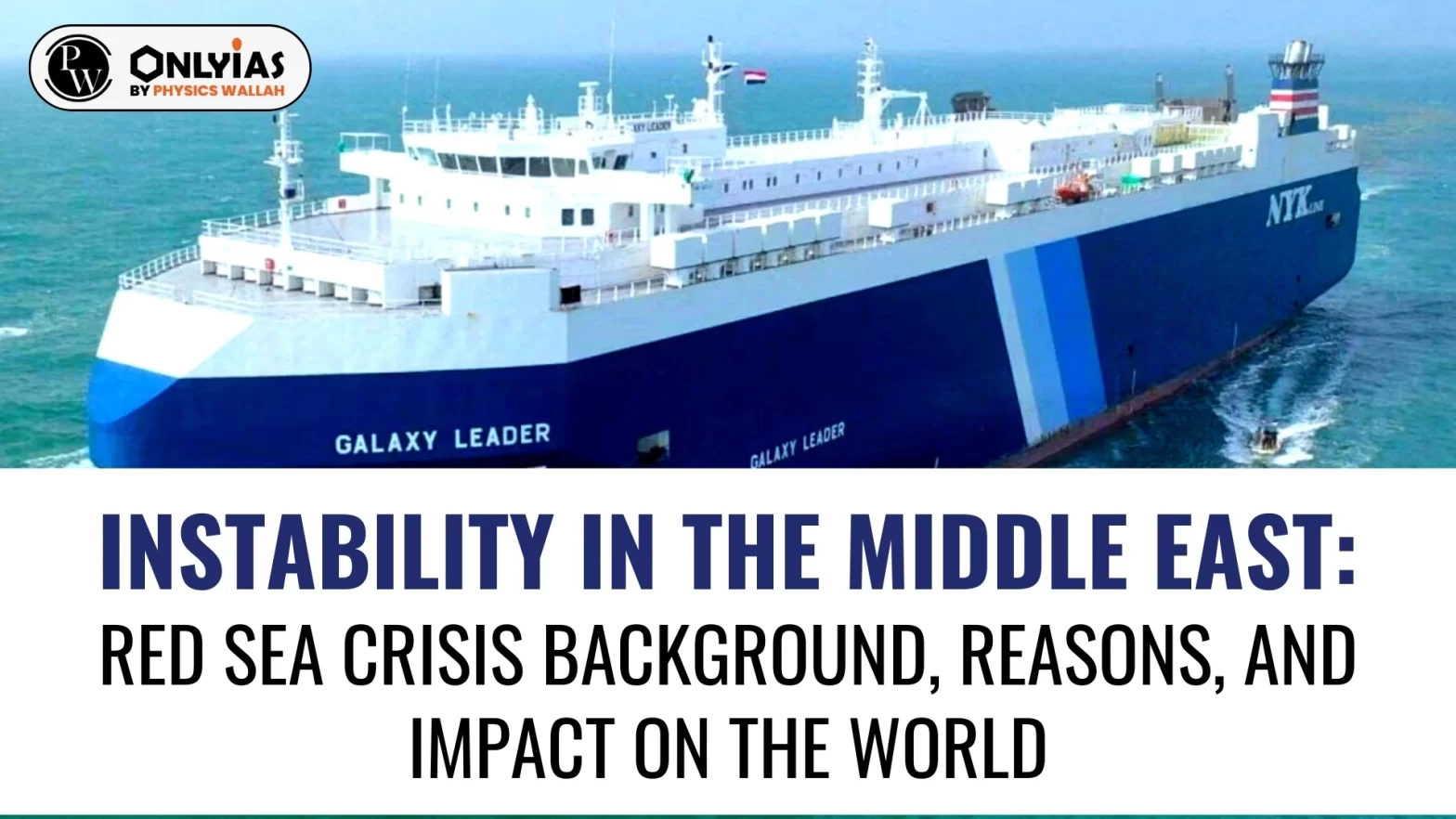Instability in the Middle East & Red Sea Crisis: The Houthi rebels of Yemen are stepping up their strikes on ships passing through the Red Sea region.

Instability in the Middle East & Red Sea Crisis: The Houthi rebels of Yemen are stepping up their strikes on ships passing through the Red Sea region.
The Houthis:
Continue To Read: How Are Houthi Attacks On Ships In The Red Sea Affecting Global Economy? |
|---|
| Red Sea Crisis and Its Impact on the World | |
| Criteria | Description |
| Geo-Political Crisis |
|
| Economic Crisis |
|
| Humanitarian Crisis |
|
| Red Sea Crisis and Its Impact on India | |
| Criteria | Description |
| Fuel prices | The government, which was planning to reduce the prices of fuel, will have to give up the idea owing to the rise in crude oil prices. |
| Affects Indian Exports | Indian exporters will have to hold on to their consignment or reroute it through the longer Atlantic Ocean route. In many cases, exporters also have to bear higher insurance costs. |
| Domestic Inflation | Domestic inflation may witness a rise due to increase in cost of imported commodities, especially petroleum and natural gas. |
| Regional Security | India is located in close proximity to the Red Sea region and instability could affect India’s maritime security. |
| Indian Diaspora | Indian diaspora living in the regions surrounding the Red Sea could face the brunt of the security crisis. |
The Red Sea
The Suez Canal
Also Refer: The Ben Gurion Canal Project – A New Maritime Route |
Further Reading: The Red Sea Crisis
| Must Read | |
| NCERT Notes For UPSC | UPSC Daily Current Affairs |
| UPSC Blogs | UPSC Daily Editorials |
The Houthi rebels of Yemen are stepping up their strikes on trading ships passing through the Red Sea region.
The followers of Al-Houthi are termed ‘Houthis’.The Houthi movement, also known as Ansarallah (Supporters of God), is one side of the Yemeni civil war that emerged in the 1990s under its leader, Hussein al-Houthi.
The Red Sea is a narrow stretch of sea, which runs from the Bab-el-Mandeb straits off the coast of Yemen to the Suez Canal in northern Egypt.
Red Sea is surrounded by Sinai Peninsula, the Gulf of Aqaba, and the Gulf of Suez to the North; Bab-el-Mandeb strait to the South; Arabian Peninsula to the East; and Africa to the West.
Egypt, Saudi Arabia, Yemen, Sudan, Eritrea and Djibouti border the Red Sea. The Gulf of Aqba, a branch of the Red Sea borders Egypt, Israel, Jordan and Saudi Arabia.
Suez Canal is a man-made water channel that links the Red Sea to the Mediterranean Sea. It is the shortest route between Asia and Europe.
<div class="new-fform">
</div>
